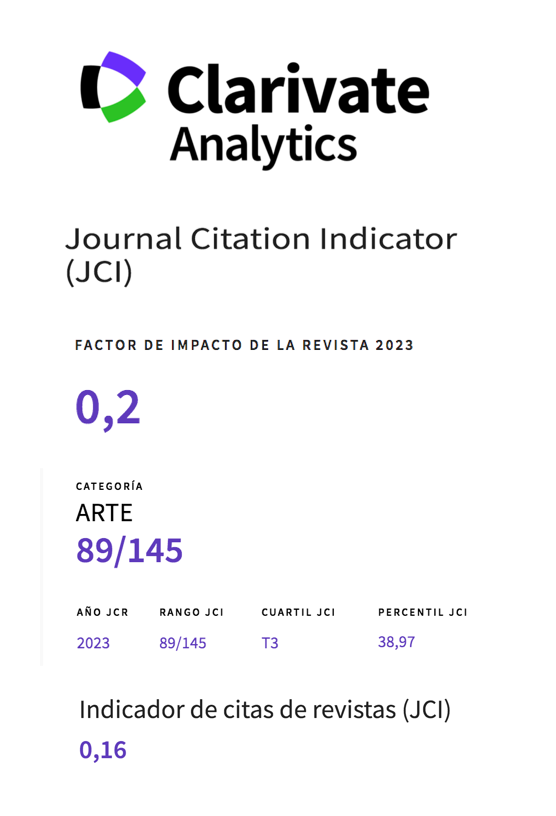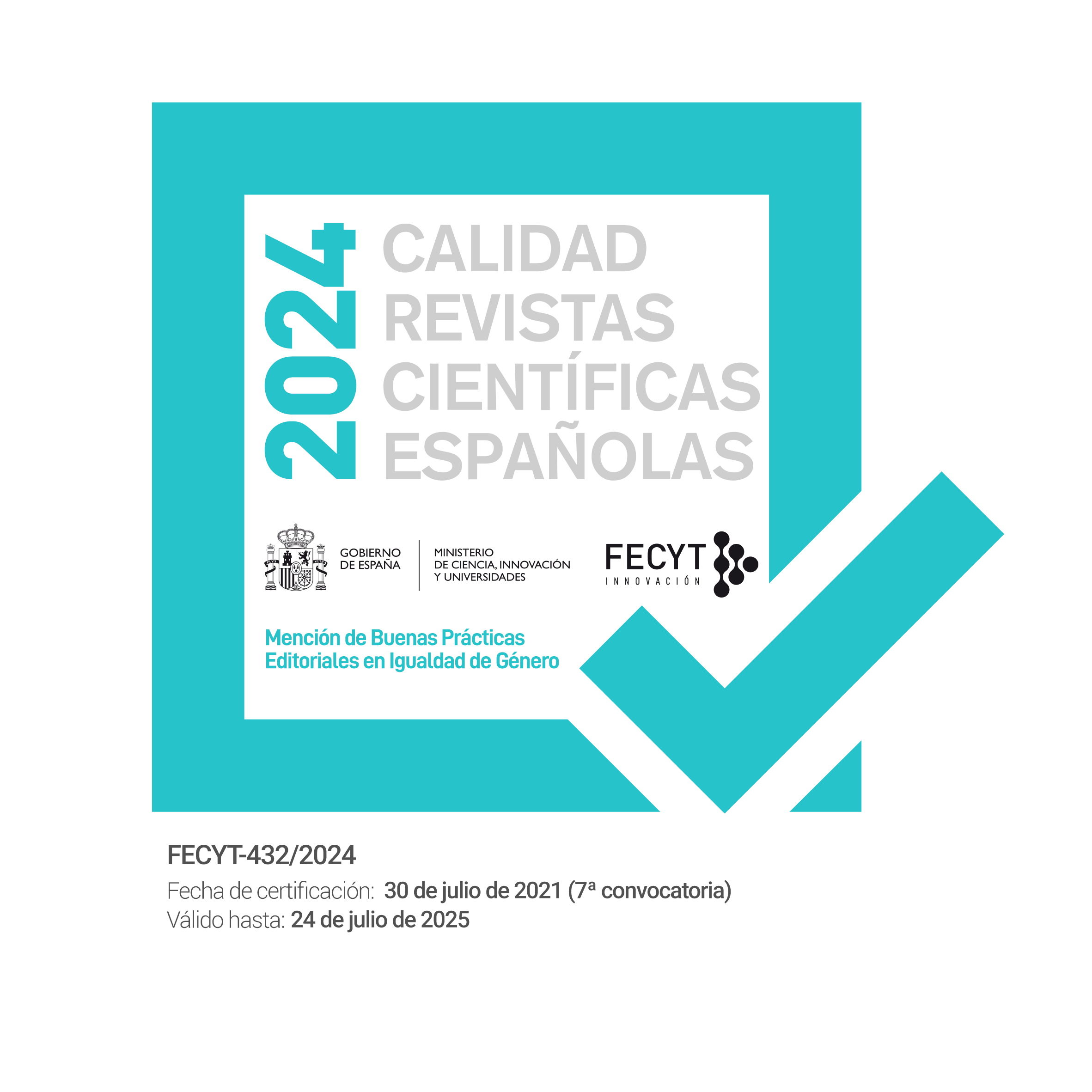In The Sands of the Sound Art
Abstract
In the sands of the sound art illustrates the difficulty to define sound art and to submit it to a characterization. This written examines the expression sound art by establishing their links with the artistic avant-garde of the first and second half of the 20th century. This leads to an analysis of the way that the notion of experience is modified regarding what is meant by art, and the importance that takes the notion of experimentation in the musical practices of the 50s and 60s. The crossing between experience and experimentation becomes evident in the importance that the sound receives beyond the musical area, particularly in artistic practices that make the city as a center. The city becomes a great aesthetic machine which the sound art enters into dialogue. In this dialogue there can be outlined some of the forms that the sands of sound art drawn in the city.
Downloads
-
Abstract971
-
PDF (Español (España))719
References
Baudelaire, Ch. (1975). À une heure du matin. Le Spleen de Paris, Œuvres Complètes, t. I. Paris: De la Pléiade, Gallimard.
---------- (1976). Le peintre de la vie moderne, Œuvres Complètes, t. II. Paris: De la Pléiade, Gallimard.
Benjamin, W. (1980). Erfarung und Armut, Gesammelte Schriften II, Frankfurt am Main: Suhrkamp.
Beyer R. (1996). Das Problem der Kommenden Musik, Ars Sonora, nº3, 69-70.
Cage, J. (1961). Experimental Music: Doctrine. In Silence. USA: Wesleyan University Press.
Gibbs T. (2007). The Fundamentals of Sonic Art & Sound Design. Lausanne: AVA. Págin
Hellerman, W. y Goddard D. (1983). Catalogue for Sound/Art at The Sculpture Center. New York City, May 1–30, 1983 and BACA/DCC Gallery June 1–30, 1983.
Higgins, D. (1966). Intermedia, The something else newsletter, New York, volumen 1, número 1.
Horckheimer, M. y Adorno, Th.W. (2006). Kulturindustrie-Aufklärung als Massenbetrug. In Dialektik der Aufklärung, Philosophische Fragment. Frankfurt am Main: Suhrkamp.
Iges, J. y Jerez, C. (2010). Jardín de Poetas. En Arte Sonoro. Madrid: La Casa Encendida.
Iges J. (ed.) (2012). Ars Sonora. Una experiencia de arte sonoro en radio. Madrid: Fundación Autor.
Kandinsky, W. (1995). De lo espiritual en el arte, Barcelona: Labor.
Kostelanetz, R. (1968). The Theatre of Mixed Means. New York: The Dial Press.
Licht, A. (2007). Sound Art. Beyond Music, Between Categories. New York: Rizzoli International Publications.
Lockwood, A. (2003). What is Sound Art? The EMF Institute. Recuperado en enero de 2012 de http://emfinstitute.emf.org/articles/aldrich03/lockwood.html
Mumma G. (2008). A vueltas con la vanguardia: vanguardia y experimentación. En ¿Los límites de la composición? Madrid: La Casa Encendida.
Neuhaus, M. (2000). Volume: Bed of Sound
Platón, (2002). La République, l. IV. En Œuvres Complètes, T. VII-1ª parte, Paris : Les Belles Lettres.
Sadie S. y Tyrrell J. (Eds). (2004). Environmental Music. En New Grove Dictionary of Music and Musicians. New York: Oxford University Press.
Volume: Bed of Sound, P.S.1 New York: Contemporary Art Center. Audio CD.Wishart, Tr. (1996). Die elektroakustische Musik is tot –lang lebe Sonic Art, Positionen nº 29, 7-9.
Works published in this journal are subject to the following terms:
- The Service of Publications from the University of Murcia (publishing house) keeps the published works’ copyrights, and favors and allows the reuse of these works under the license indicated in point 2.
- Works are published in the journal’s online edition under the license Creative Commons Reconocimiento-NoComercial-SinObraDerivada 3.0 España(texto legal). They can be copied, used, disseminated, transmitted and publicly exhibited, as long as: i) the author and original source of publication are cited (journal, publishing house and work’s URL); ii) they are not used for commercial purposes; iii) the existence and specifications of this license are mentioned.
3. Conditions for auto-file. It is allowed and encouraged that authors share electronically their pre-print version (the pre-reviewed version) and /or post-print version (the reviewed and accepted version) of their Works before the publication, since it promotes its circulation and dissemination. RoMEO color: green.










